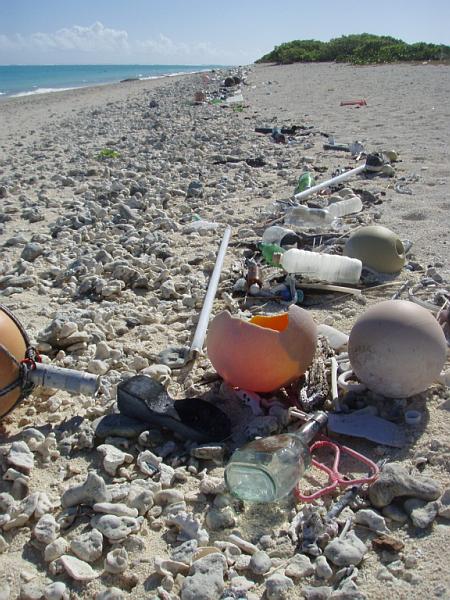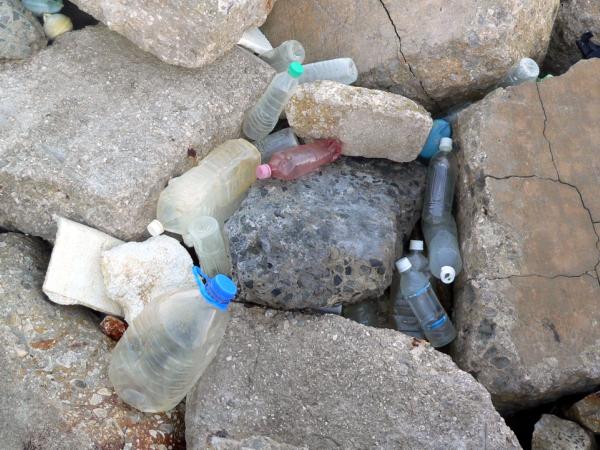Published in the Ocean Watch column, Honolulu Star-Advertiser © Susan Scott
Friday, March 28, 2008
When we buy bottled water, we’re wasting money, supporting big business and wrecking the planet.
We’re also being conned. A Hawaii high school teacher recently told me her favorite brand of water was the best because it came from the ocean 3,000 feet deep.
“It’s not processed,” she said. “It’s pure.”
“But ocean water is salty,” I said. “It has to be processed.”
“Oh no,” she said. “It’s fresh way down there.”
Together we looked at the label on the front of the bottle: “100% Deep Sea Drinking Water from 3,000 feet.” Of course, on the back label it says “desalinated.”
Bottled water is this century’s snake oil.
My awareness of the enormity of this problem began during my recent trip to Midway where I found the beaches littered with plastic fishing floats, nets, boat parts, toothbrushes and the like. No surprise there. Most beaches suffer the same.

What shocked me, though, was the number of plastic water bottles scattered in and among the other junk. In a tiny corner of a breakwater there, I counted 16.

Sixteen bottles in one little spot of one little island struck me hard. Back home, I started noticing bottled water.
People carry it everywhere. The plastic bottles are in purses, day packs, waist belts and strollers. Workers sip from them in offices, hospitals, at parties and at home. The stuff is for sale everywhere, including vending machines, hardware stores and even department stores.
And why? Aggressive marketing has made Americans believe that to be healthy each of us must drink eight glasses of water a day, and that water has to be bottled.
No one, however, knows how much fluid each of us needs or when. But our bodies do. It’s called thirst and it’s OK to feel it. Being thirsty is not an emergency, nor is it unhealthy. Human bodies are great at adjusting for periods of low water intake.
Another myth is that caffeine is a diuretic, meaning it makes you pass more water out than you take in. That’s untrue. A 2003 study of American soldiers in Iraq showed that caffeine consumption did not affect their hydration levels.
That means coffee, tea and caffeine-containing sodas count as water intake, and so does food. Twenty percent of our water comes from the food we eat.
Purchased water comes in nondegrading plastic bottles that beleaguer our beaches, litter our trails and spoil our parks. Their cost in crude oil, carbon dioxide emissions and landfills is staggering. For numbers, see Richard Brill’s column of March 2.
The heartbreak of this is that bottled water is no healthier than tap water. In many cases it is tap water. The largest manufacturers of this multibillion-dollar business, Coke and Pepsi, have admitted to bottling tap water.
When you need to carry water with you, the Sierra Club, National Resources Defense Council, World Wildlife Fund and other environmental groups recommend tap water in reusable containers.
If you don’t like the taste of your water, buy a home filter system. These are inexpensive and effective.
When it comes to ocean pollution, global warming and corporate greed, most of us feel helpless. But getting drinking water from our taps rather than bottles is taking a swing at all three.
We start swinging when we stop buying.